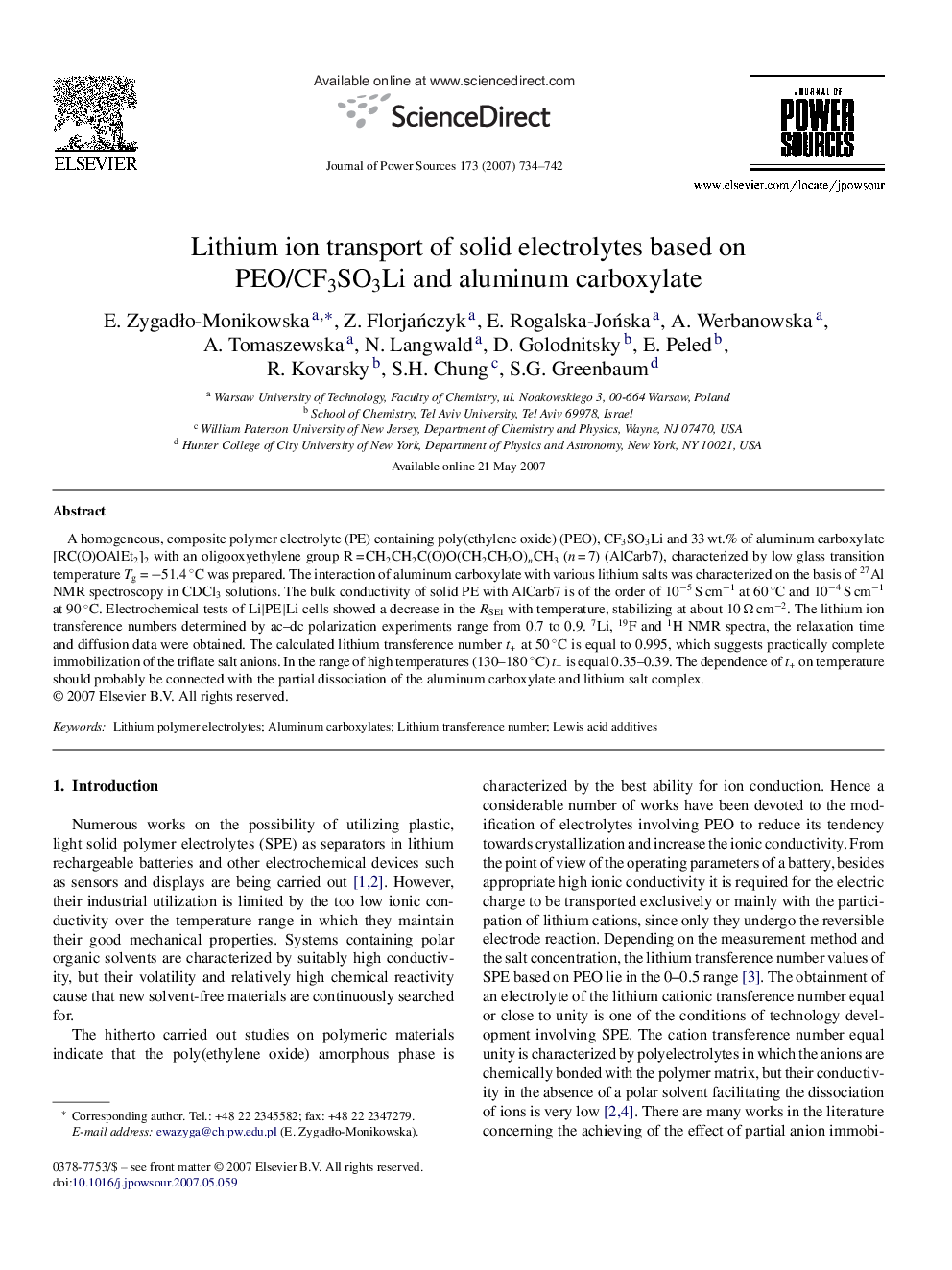| Article ID | Journal | Published Year | Pages | File Type |
|---|---|---|---|---|
| 1290998 | Journal of Power Sources | 2007 | 9 Pages |
A homogeneous, composite polymer electrolyte (PE) containing poly(ethylene oxide) (PEO), CF3SO3Li and 33 wt.% of aluminum carboxylate [RC(O)OAlEt2]2 with an oligooxyethylene group R = CH2CH2C(O)O(CH2CH2O)nCH3 (n = 7) (AlCarb7), characterized by low glass transition temperature Tg = −51.4 °C was prepared. The interaction of aluminum carboxylate with various lithium salts was characterized on the basis of 27Al NMR spectroscopy in CDCl3 solutions. The bulk conductivity of solid PE with AlCarb7 is of the order of 10−5 S cm−1 at 60 °C and 10−4 S cm−1 at 90 °C. Electrochemical tests of Li|PE|Li cells showed a decrease in the RSEI with temperature, stabilizing at about 10 Ω cm−2. The lithium ion transference numbers determined by ac–dc polarization experiments range from 0.7 to 0.9. 7Li, 19F and 1H NMR spectra, the relaxation time and diffusion data were obtained. The calculated lithium transference number t+ at 50 °C is equal to 0.995, which suggests practically complete immobilization of the triflate salt anions. In the range of high temperatures (130–180 °C) t+ is equal 0.35–0.39. The dependence of t+ on temperature should probably be connected with the partial dissociation of the aluminum carboxylate and lithium salt complex.
